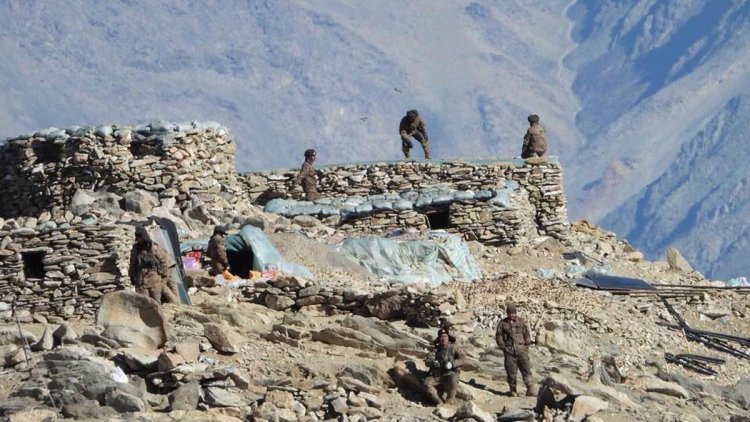India - China: Land Border Law is a Sinister Move
STORIES, ANALYSES, EXPERT VIEWS

The US Department of Defense (DoD)’s annual report to Congress on ‘Military and Security Developments Involving the People’s Republic of China’, had a reference to a “100-home civilian village” constructed by China in Arunachal Pradesh “sometime in 2020”. This, writes Lt Gen H S Panag (former GOC in C Northern Command and Central Command. Post-retirement, he was Member of Armed Forces Tribunal) “brought the issue back into focus after nearly a year. The debate then and now centred on the peripheral issue of whether the village was constructed on Indian territory under Chinese occupation since 1959 or if it has happened under the watch of the Narendra Modi government in power since 2014.
“The larger issue of China’s strategy to assert its sovereignty with respect to disputed territories through management/development of its borders areas has not got the attention it deserves. This ongoing process has recently been formalised into a ‘Land Border Law’ enacted on 23 October 2021.”
Objective of the Land Border Law
On the face of it, the Land Border Law provides the framework for border management and development. However, Articles 3 and 4 have serious ramifications for India and Bhutan states the former General. As per Article 3 “land borders refer to the boundaries that demarcate the territorial land and internal waters of the People’s Republic of China and its neighbouring countries.” Article 4 states: “The sovereignty and territorial integrity of the People’s Republic of China are sacred and inviolable.”
Chinese maps, writes the former General “show the entire Arunachal Pradesh, Barahoti Plains in Uttarakhand and areas up to the 1959 Claim Line in Ladakh as part of its territory. The implications for India are that all territory usurped, militarily seized or likely to be in future, will be considered to be Chinese sovereign territory, the integrity of which is sacred. In addition, China asserts absolute control over its internal rivers disregarding the interests of riparian states.”
India’s reaction
The spokesperson of the Ministry of External Affairs said, “China’s unilateral decision to bring about legislation which can have an implication on our existing bilateral arrangements on border management as well as on the boundary question is of concern to us. Such unilateral moves will have no bearing on the arrangements that both sides have already reached earlier, whether it is on the boundary question or for maintaining peace and tranquillity along the Line of Actual Control in India-China Border areas. Furthermore, the passage of this new law does not, in our view, confer any legitimacy to the so-called China Pakistan ‘Boundary Agreement’ of 1963 which Government of India has consistently maintained is an illegal and invalid agreement.”
China’s denial
Responding to India’s objections, the Chinese foreign ministry spokesperson, Wang Wenbin, had said, “ It (Land Border Law) will not affect China’s compliance with existing treaties related to national land boundary affairs. China has already signed or changed China’s current model of boundary management and cooperation with countries sharing a land boundary with it. Nor will it alter China’s position and proposition on relevant boundary issues.”
“It is pertinent to mention that with its multiple intrusions up to the 1959 Claim Line and massing of troops along the LAC since May 2020, China has already violated the 1993, 1996, 2005, 2012 and 2013 border management agreements/protocols with impunity. Thus, there is no guarantee that it will abide by them in the future.”
Land Border Law prohibits the construction of permanent facilities near China’s borders without permission from Chinese authorities. The vague wording, argues the former General “is likely to be interpreted to include both sides of the border, creating the potential for additional friction. More so, when Chinese maps show vast tracts of Indian territory as being part of it. China will endeavour to prevent India’s infrastructure development using military and diplomatic coercion under the umbrella of the new law. Let us not forget that India’s development of border infrastructure in Eastern Ladakh was the root cause of China’s actions.”
The suggestion his for India to take sgteern action to neutralise Chinese designs.
















